- 1. Drawing Skills + Creative Resilience Go Hand in Hand
- 2. Sometimes Jumping in Headfirst The Best Way to Learn
- 3. Figure Out a DIY Photo Studio Alone
- 4. Challenge Yourself to Push Your Limits For Life
- 5. Don't Draw What You See. Analyse How Things Works.
- 6. Don't Copy. Interpret!
- 7. Tip from an Industrial Designer: Solve Problems for Fun
- 8. Love Progress More Than Fear of Mistakes

1. Drawing Skills + Creative Resilience Go Hand in Hand

Remember your childhood drawings when your characters had hands hidden in the pocket, or simply have no hand at all?
We are so fearful of drawing them, we just skipped them!
Oh lala, hands are like the ultimate puzzle for any artist or designer of any level.
Yes, professional designers too struggle to draw hands!
If you can’t, that’s ok we all went through this. It’s now about what you are gonna do: Keep avoiding drawing hands? Or overcome that fear and figure out a solution?
Avoiding drawing difficult subjects will tremendously limit you as an Industrial Designer. How can you innovate, if you got a great idea, but stop yourself from drawing it, just because you feel scared to messed up.
Today I wanna share with you some drawing and motivational tips to help you conquer your fear of drawing tough subjects. I believe that to truly help you grow, I need to share drawing techniques but also help you strengthen your creative mindset.
However, if you would like a specific video tutorial on how to draw hands, let me know. : )
Let me tell you a little story from when I was a student in design school.
My master’s degree project was about drawing a glove. Yep, a glove. In other words, a complicated hand with even more details and intricacies!
The pressure was huge because my entire five-year degree hinged on it. Talk about putting the stakes sky-high while I was so bad at drawing hands!
2. Sometimes Jumping in Headfirst The Best Way to Learn
You know how sometimes the best way to really learn something is to just dive right in?
Like when you’re learning to swim and the best teacher is simply jumping into the pool and figuring it out?
That was me with drawing hands. I had a tight deadline, and I just had to get creative and efficient to nail this project.
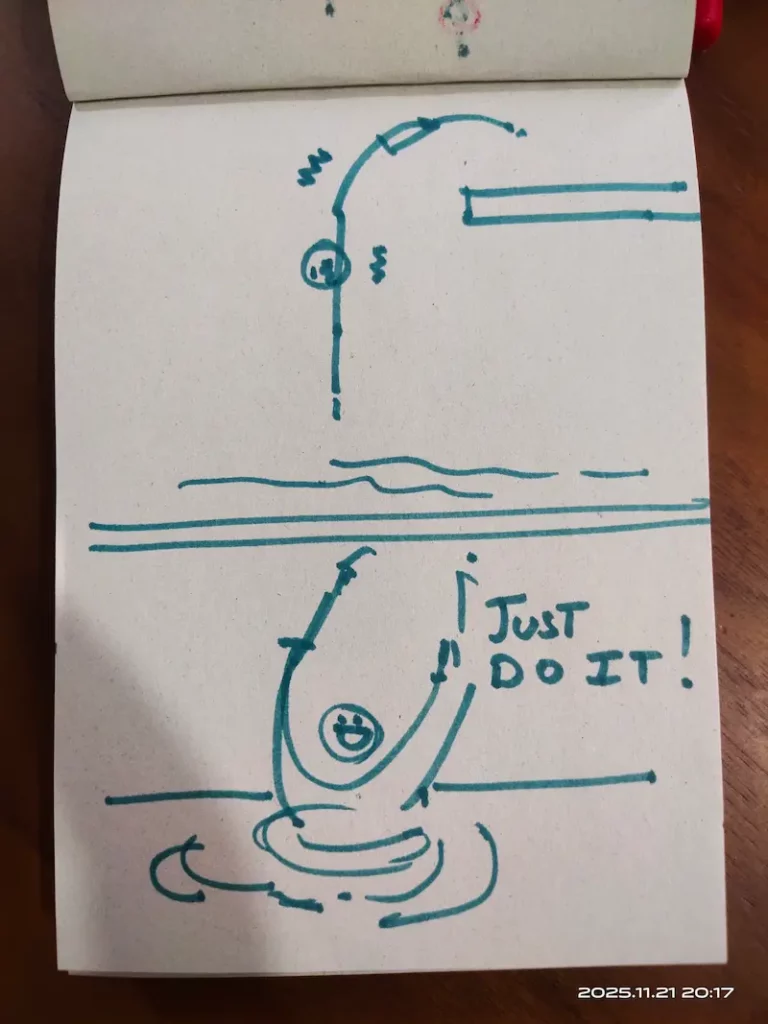
This is why, at that moment, we got to put our ego beside and accept we need help, and that our first hand drawing will be bad. We can’t escape that stage. But if you start trying, there is a big chance you’ll overcome that, and feel proud about it. Be ok doing mistakes.
In other words, “Be comfy to go through the pain to deserve the gain.“
I have another quote haha: “What does not kill you makes you stronger”.
I know it sounds a bit cheesy, but it really fits when you’re working on building a strong mindset and raising your own expectations.
I could have grabbed some books or searched Google for hand models. Pretty typical, right?
But none of those resources really clicked with me or felt inspiring.
So, I got a bit resourceful. Why not photograph my own hands?
That way, I could build a personal library of reference photos tailored just for me! With that library I could study hands from all the angles and positions I need.
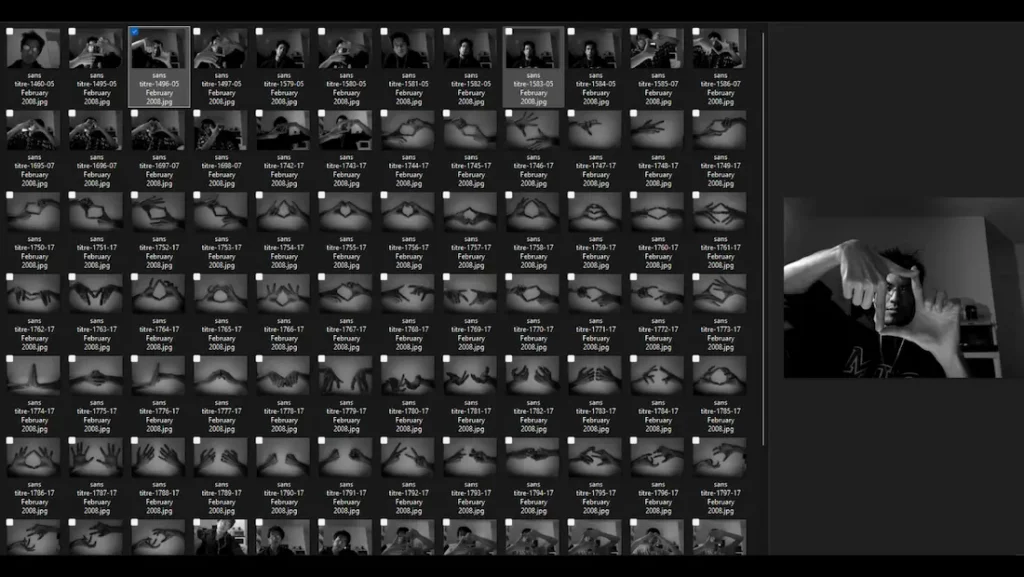

To get started in Design Sketching, make sure to learn your basics step-by-step with the Free Book!
> Download The Designer Starter Kit here.

3. Figure Out a DIY Photo Studio Alone
Learning how to draw can be lonely isolated at home.
So, I got to be extra creative to come up with a personal DIY photo studio to reference my multiple hand positions.

Here’s a funny part: when I first turned on my Logitech webcam to take black and white photos (to better see the light and shadows on my hands), I realized I was a distraction being in the frame too!
So, I grabbed a large white cardboard to block out my body and focus solely on the hands.
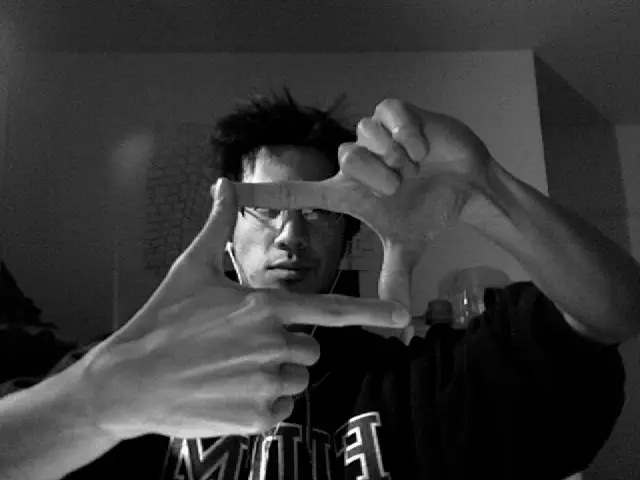
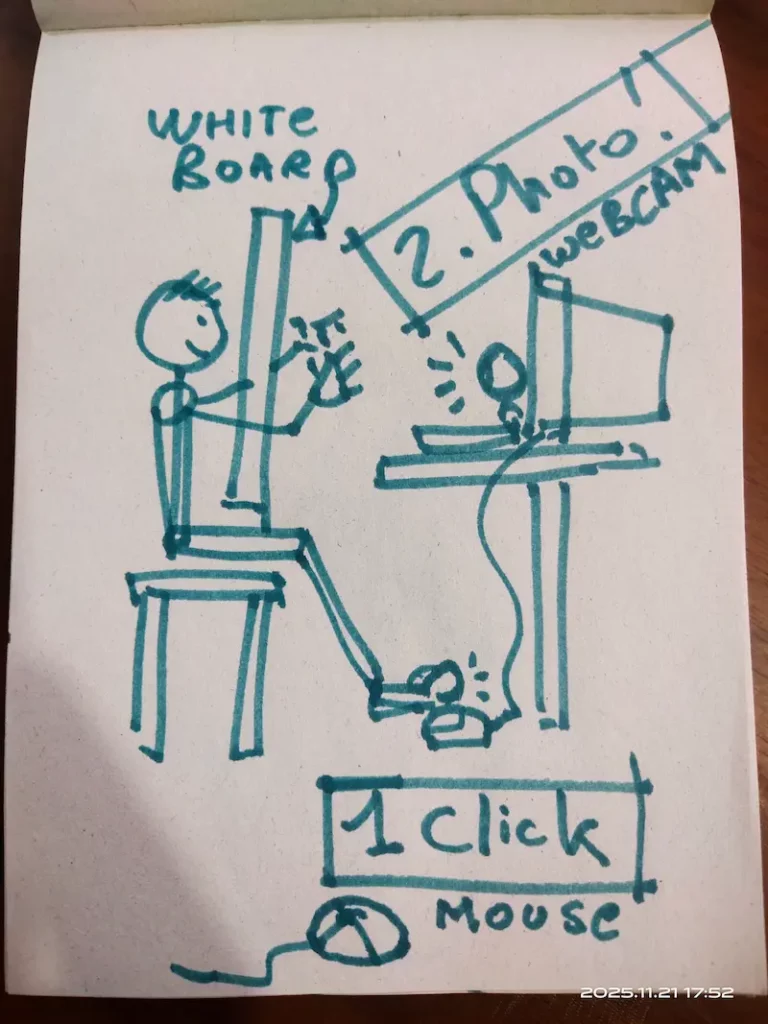
Imagine this:
Both hands in the photo, me trying to hold the giant white board on my knees to use it as a clear background for my hands, to press the camera button with my foot, mouse on the floor, and me balancing like a clown! 🙂
Haha! Those moments forced me to think outside the box, and they made the process way more fun.
Not being fear of acting ridiculous can lead you further.
Note: See how simple is my doodle above?
It took me 2 minutes to draw it. Even though I love drawing, as a designer, allocate a “speed doodle style” for your notes. Do not overcomplicate it for beauty. Productivity time matters as a professional designer.
Always adapt your sketching style to your drawing purpose.
4. Challenge Yourself to Push Your Limits For Life
What I love about improving my drawing skills is that when we learn something new, we master the skill for life.
I feel somehow like Son Goku from Dragon Ball Z upgrading his Superpowers!
Don’t settle for average. If you are a student designer, target being in the top 10% of your school.
The secret is to bring an analytic approach to drawing in 3 dimensions.
To be super productive, I could have skip learning how to draw hands!
I could have use hands photo as underlay and draw designs of gloves on top (yes, that would mean cheating, and in Industrial design sketching is allowed if it makes you save time!), however, I decided to hold the bull’s horns and draw hands and gloves using my own sketching style: dynamic and lively!
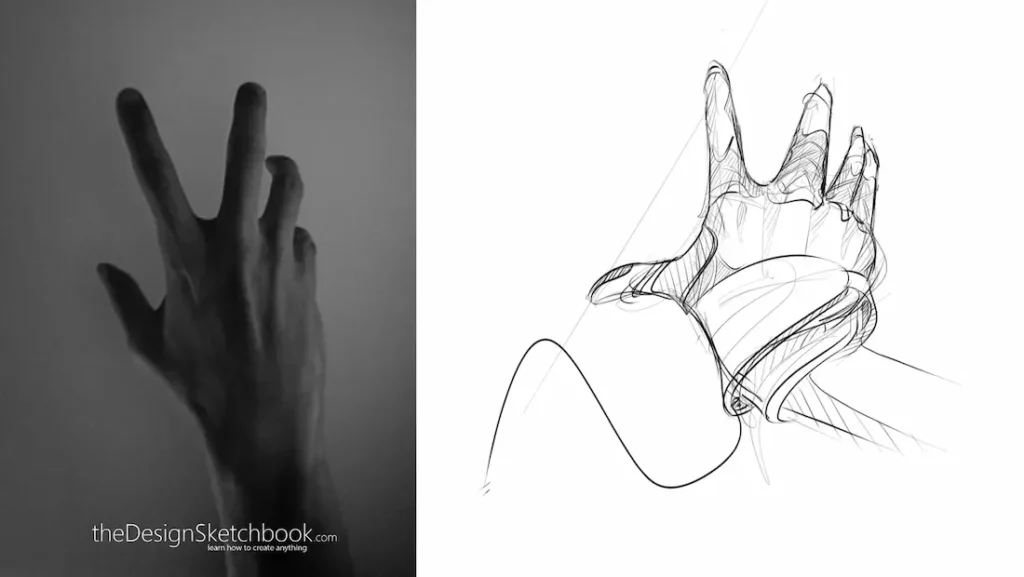
I knew I would learn a lesson that would stick to me for life and be able to draw people with hands in action (and no more hiding them in pockets)! As an Industrial Design Student, I wanted to upgrade my skills so I could better communicate my ideas and product concepts to future clients.
This is why, when I see my VIP students of my course “Sketch Like The Pros” get things too easily, I like to propose them special challenges for them to level up even more and build up that ambitious spirit.
5. Don’t Draw What You See. Analyse How Things Works.
Here is one of the major TIP that unlocked my progress.
I stopped trying to reproduce exactly what I see like how a portrait artist would do using a 2D grid.
Instead, I tried to analyse how to draw hands thinking of How it works: bones, joints, movements.
I focused on understanding the form of my hands in three dimensions. Why?
Because as a Designer you need to free yourself from reference pictures as they are most of all inspiration pictures.
So, I could be able to draw in any positions from imagination!
If I only learned how to copy, I would always need a reference picture to lean on. My goal is to draw anything in 3 dimensions using design sketching strategy.
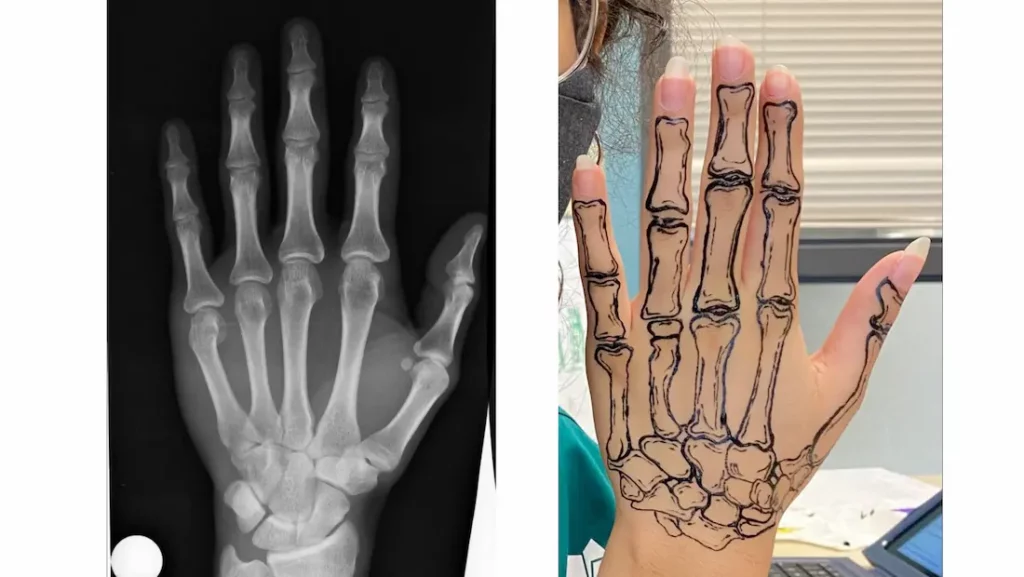
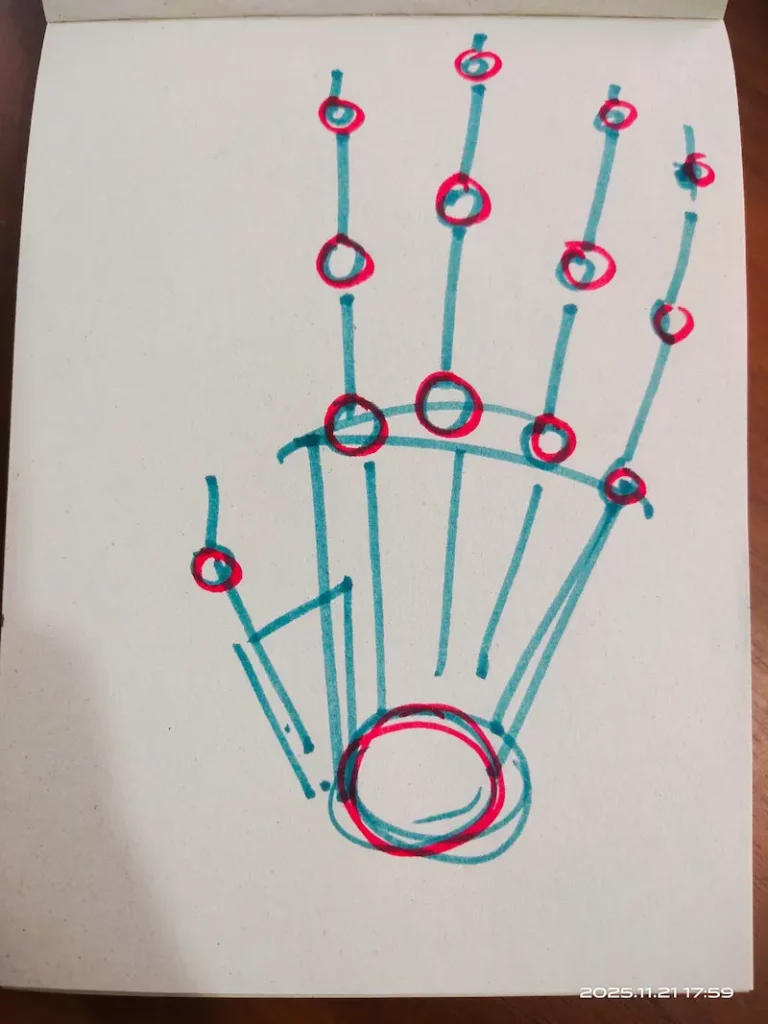
See hands in transparency like X-ray to spot the bones and joints. Then focus on the hand muscles.
When you can visualise and draw in 3 dimensions, you can articulate them like a puppet from imagination.
Learn how to draw in 3 dimensions, so you can gain real creative freedom.
This shift, from copying to comprehending makes a huge difference in your sketches and builds real designer skills.

6. Don’t Copy. Interpret!
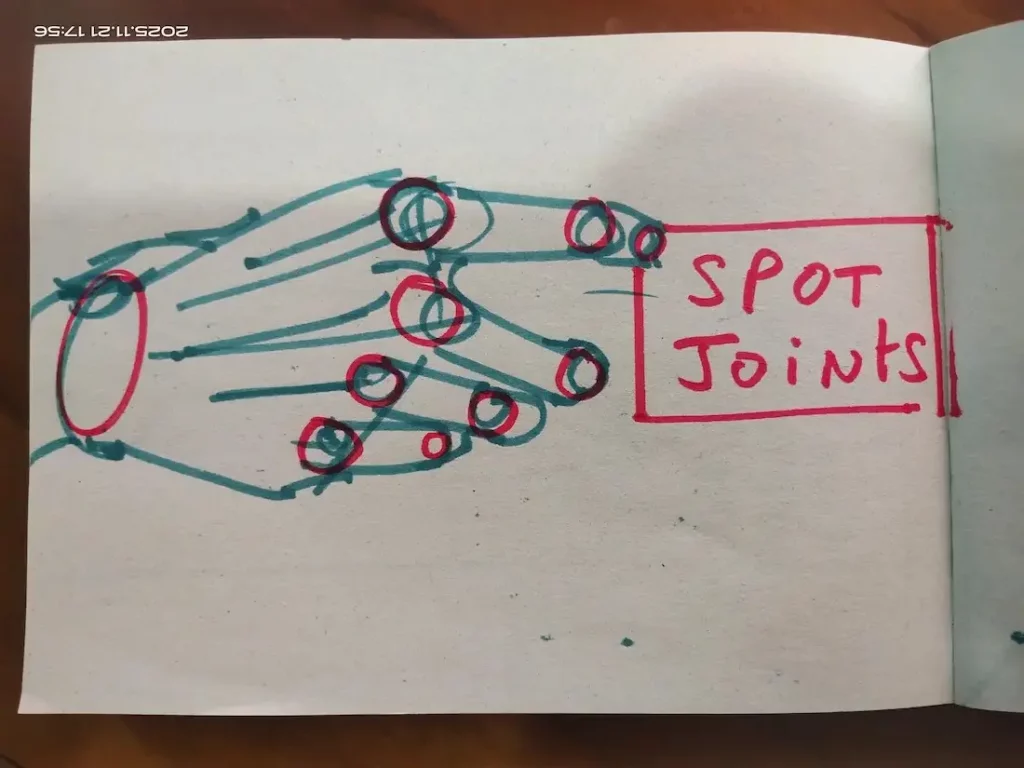
It’s ok to not draw 100% what you see as long as you understand how hands work. Don’t copy, interpret!
Doing so, you can free yourself from the original Foto and draw anything with your own sketching style.
Here are some observation tips for beginners:
- Look at your hand from different angles, not just the front or the palm.
- Think Inside-Out: See hands in transparency and spot the skeleton in different positions. Study them.
- Simplify: Practice drawing hands in simple shapes, think of muscle groups.
- Study how light creates shadows and highlights. Draw them with simple and oblique hatching.
- Use your photos as guides, not rules.
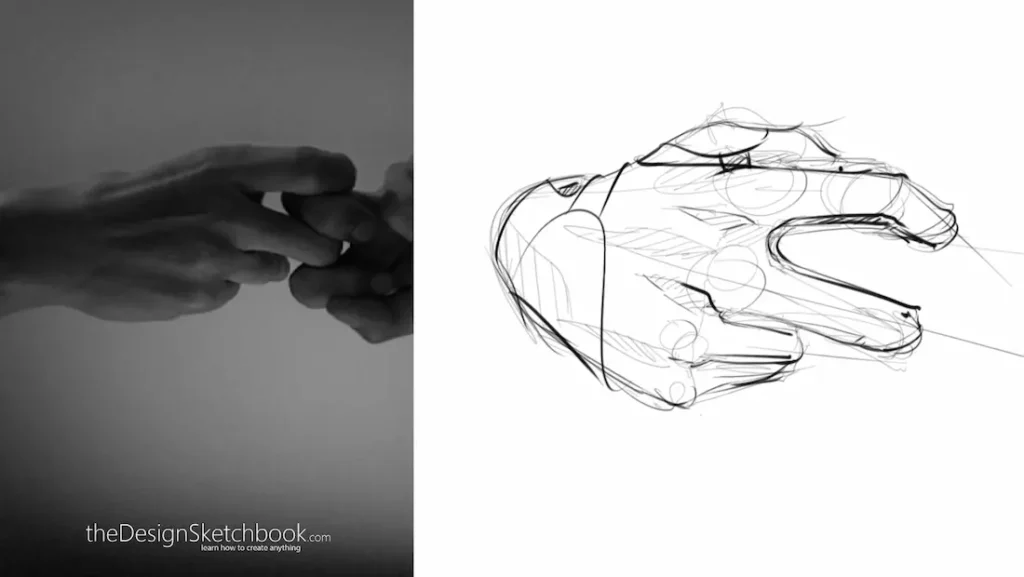
7. Tip from an Industrial Designer: Solve Problems for Fun
Here’s the real takeaway I want to share with you If you can’t do something, don’t say “I can’t because…” Instead, switch your mindset to “What could I do to get this done?” This simple change sparks creativity and opens new doors in your work.
- When stuck, ask yourself What tools or methods can I easily access?
- Use whatever resources you have around you; your own body can be the best model.
- Don’t be afraid to experiment and make mistakes. Be confident!
- Keep it fun and adventurous!

This problem-solving mindset doesn’t just help with your personal sketching journey; it’s a golden rule for your future professional projects in design.
Often, you start without a clear destination. It’s like driving through fog since you begin each project with a problem or a mission. The key is to keep moving forward with curiosity and enthusiasm and be comfortable working within the unknown.
Build that resilient designer mindset from the start, so nothing seems impossible to you.
Cultivate faith in yourself.
8. Love Progress More Than Fear of Mistakes
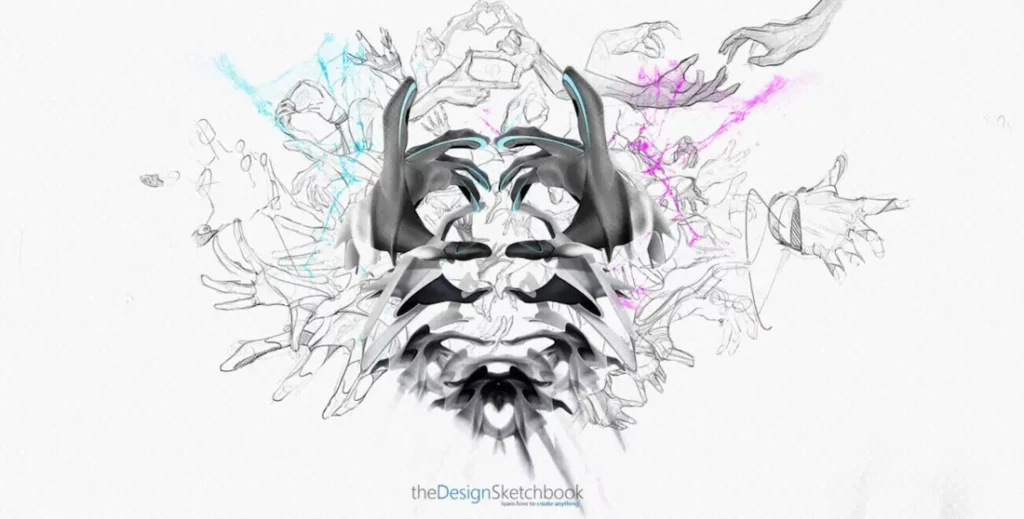
Drawing hands is tough, no doubt about it. We all start beginner at everything.
But remember, as a designer or artist, challenges are just opportunities in disguise.
The industrial designer mindset: be resourceful, stay calm, be curious will take you far. So, next time you hit a tough spot in your sketch, smile, love to figure out how to solve the problem, and keep going!
- “I don’t know how to draw hands? I will figure out!”
- “I start a new car project? I will figure out!”
- “The client needs a new concept of cooking appliance? I will figure out!”
You are a designer, get ready to draw stuff you never did before since your creative role is to invent the future world.
“What’s difficult today, will become easy tomorrow.”
That’s how with resilience; you will climb the ladder one step at a time and soon realise you have already completed an amazing journey since your first drawings.
I hope I can help you getting stronger during your learning journey!
Cheers,
Chou-Tac
PS: Zoom on the hands drawing.
Ho by the way, I obtained my master’s degree in industrial design with the honors.
I made it, and going through this tough journey is one of my life accomplishments I can feel proud of. 🙂
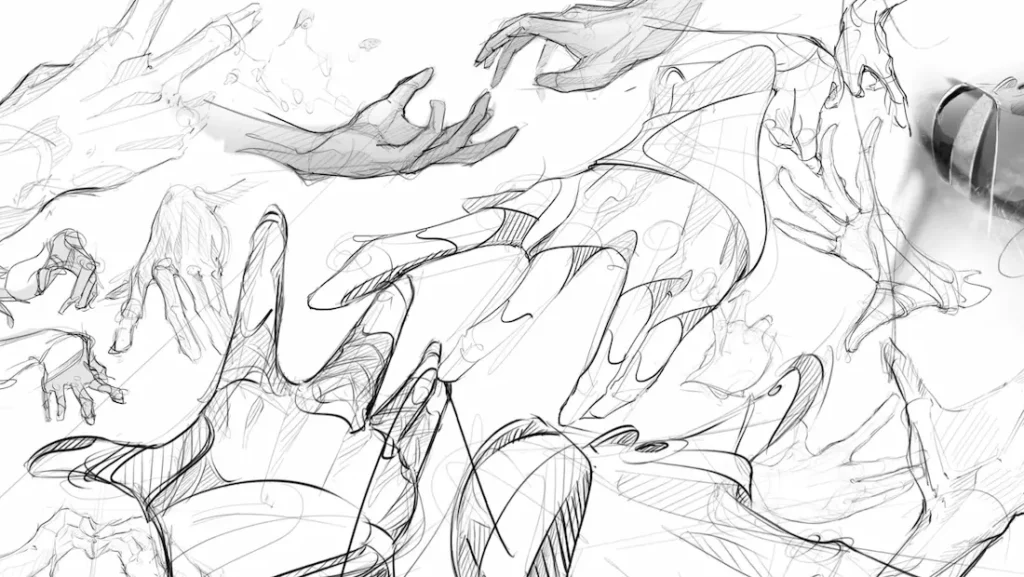

PS: Writing about overcoming challenge matters to me, as too many beginners end to give up when they face obstacles. I don’t want you to be one of them.
Remember that you are training to becoming a Designer, act like one, wear your “Problem-Solving Hat” and keep going with enthusiasm. If you want to succeed you gotta play the games, and be ready to lose sometimes, so you can win BIG!


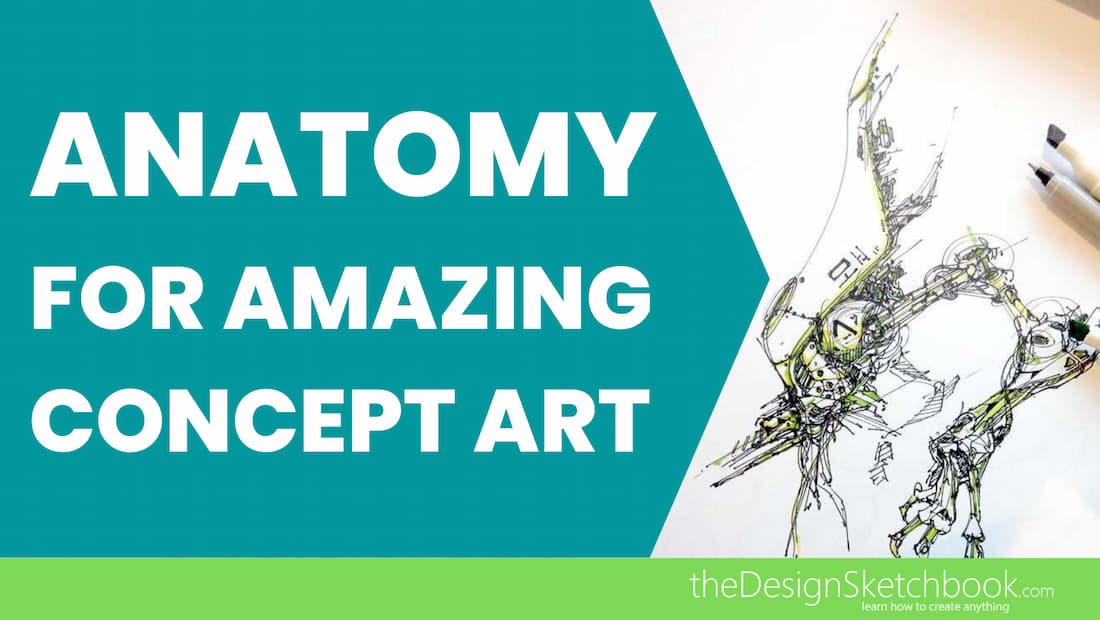


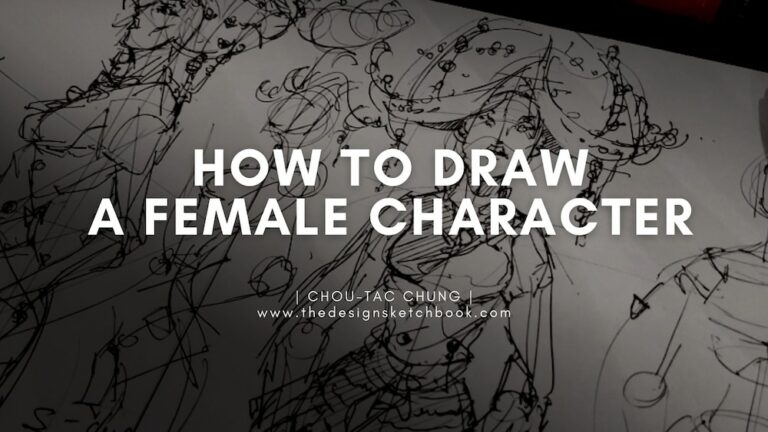


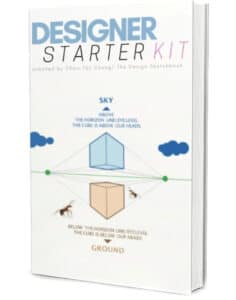



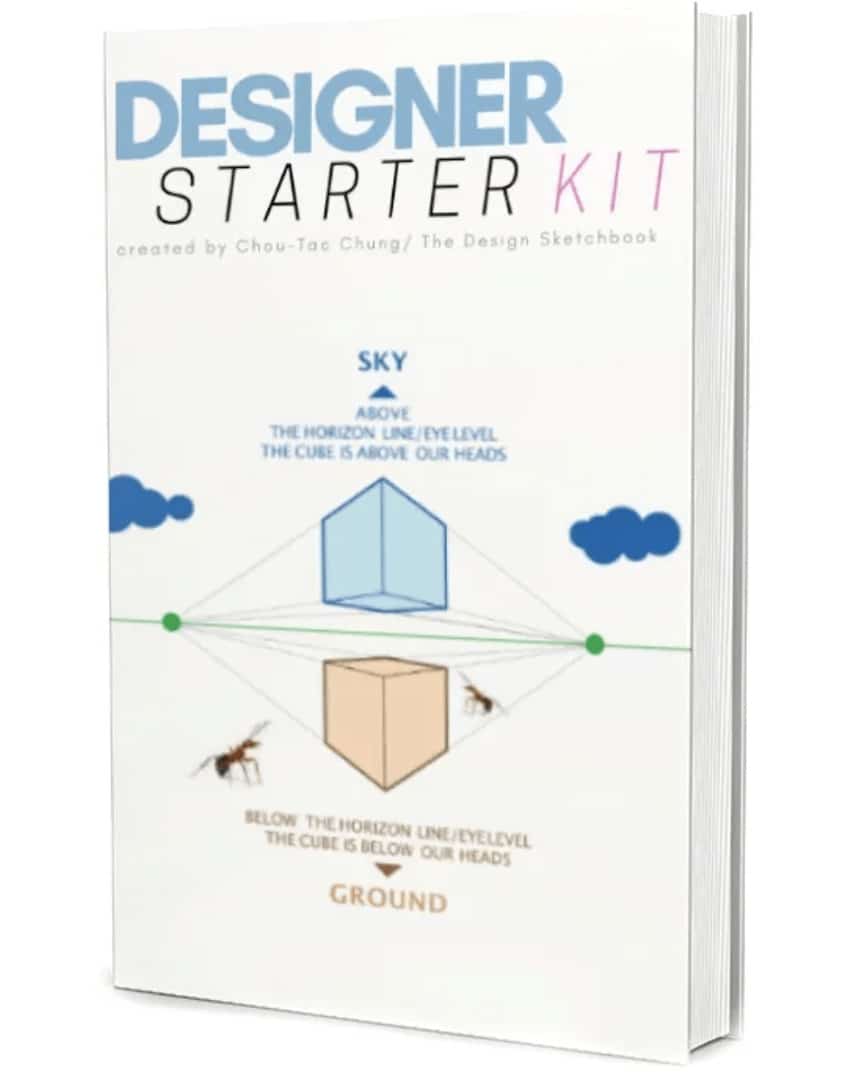


Add comment